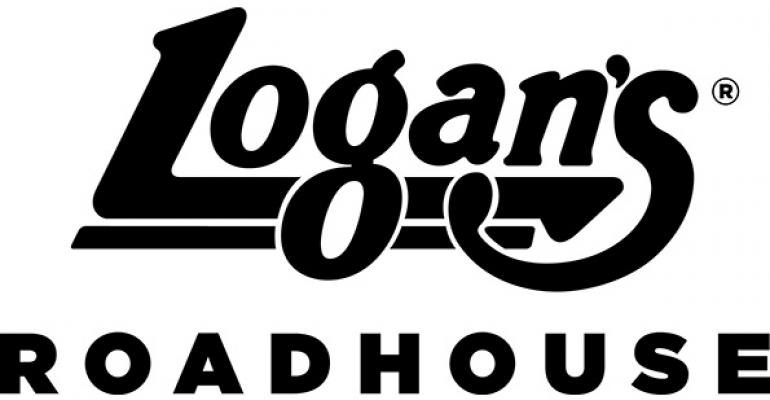Executives at Nashville, Tenn.-based Logan’s Roadhouse have cut back on advertising, discounting and new unit development as they look for ways to rebuild profits amid steep declines in guest counts.
On a recent earnings call with investors, executives said that 27 of Logan’s 234 company-owned restaurants have negative cash flow — meaning their spending is greater than their revenue. The chain has 260 total locations, including 26 franchisee-owned units.
“I’ve been focused on doing a quick drill-down on every aspect of the business,” said Sam Borgese, who was named CEO in October. He replaced Mike Andres, who left to become president of McDonald’s USA. “We’re performing a comprehensive analysis to determine the scale of immediate savings.”
Borgese had been CEO of Max Brenner International, and was formerly executive chairman at El Pollo Loco Inc. and CEO of CB Holding Corp., which owned Charlie Brown’s Steakhouse.
Among Borgese’s first steps is to rebuild Logan’s management team, including the recent appointment of Mickey Mills as chief operating officer. Borgese said on the earnings call that the company is searching for a chief marketing officer to oversee marketing and food and beverage efforts.
Borgese didn’t detail efforts to cut costs on the call, but executives offered a number of hints. They said they plan to stop opening restaurants after one currently under way is open, until they can fix other aspects of the operation. “We’re much more disciplined with how we focus on” capital spending, CFO Amy Bertauski said.
The company also reduced its advertising spending by $2.4 million in its most recent quarter, as it largely halted television advertising. “We really looked at our spending through the year and felt that we weren’t getting the return on that investment,” Bertauski said. The company indicated it would return to the airwaves once it had a marketing message that “resonates with the consumer.”
The advertising cuts come amidst weak traffic for the chain. But, Borgese said, “It’s not as risky as it may sound. We are well aware that we have to drive consumer awareness of the brand.”
Executives also suggested that the menu the chain rolled out in its fourth quarter didn’t resonate with the consumer, “and was not as simple and consumer friendly as it could have been,” Borgese said. He suggested the menu should be simplified around its core items of steak, ribs and spirits.
While the company is getting away from deep discounting, Borgese said the chain needs a value component that provides the company with a margin. He also said the company wouldn’t simply raise prices to improve profits, either, and that increases in average check should come on upselling.
“We need to build guest counts,” he said. “Preferably, both guest count and average check rise together.”
Beyond that, executives suggested that just about everything is on the table as they look to reverse the chain’s decline. “There’s really not anything we’re not taking a look at in our business today,” Bertauski said.
Logan’s problems can be attributed to a combination of high debt and weakness among the chain’s core, middle-class consumer.
Same-store sales fell 4 percent in its 2014 fiscal year ended Aug. 3. (The company’s annual report was delayed and published this week.) Traffic for the full year fell 6.7 percent.
Company sales declines hurt profits
(Continued from page 1)
The decline in traffic was offset by an increase in average check as the chain shifted away from deep discounts. That shift has hammered traffic, which fell 8 percent in the company’s second quarter, from November 2013 to January 2014. And traffic improved somewhat each quarter since, to a decline of 5.7 percent in its fourth period.
“We did start slowing down some of the deep discounting we had taken,” Bertauski said. “We felt that, clearly, there’s still too much of that in our business. We’re going to continue on the path of removing deep discounting in our business.”
Still, the company’s sales declines have hurt profits. The chain reported a net loss of $62.8 million in the fiscal year, including nearly $37 million in various impairment charges, plus $42.6 million in interest expense. Revenue for the year fell 1.3 percent, to $640.9 million.
Operating profits have fallen from $89 million in 2012 to $66.7 million in 2014, or from 14.1 percent of revenue to 10.5 percent. Adjusted EBITDA, meanwhile, fell from $75.2 million to $47.9 million over the same period.
The company has $355 million in total debt and a revolving credit line that expires in October 2015. It also reported a working capital deficit of $32.1 million for the year.
In July, Moody’s Investors Service lowered Logan’s credit rating and gave the company a negative outlook, citing the chain’s high leverage, weak sales and traffic and concern about the company’s capital structure. The downgrade, Moody’s said, reflects its expectation “that over the next 12 months Logan’s will not be able to cover its basic cash needs” without borrowing under its revolving credit line.
Without a significant improvement in operating results, Moody’s wrote, “Logan’s capital structure is not sustainable in its current form, and may require a restructuring that involves some level of impairment.”
In 2010, private-equity firm Kelso & Company bought Logan’s for $629 million, or more than 8x trailing EBITDA.
Contact Jonathan Maze at [email protected].
Follow him on Twitter: @jonathanmaze



